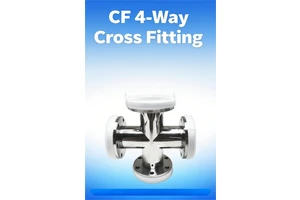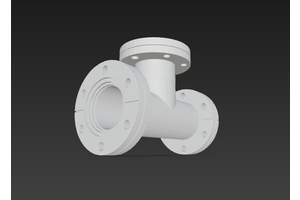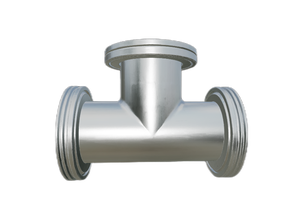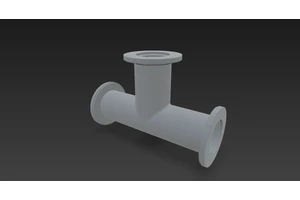Several selection types of dry vacuum pumps used in semiconductor processes
1. Preface
In the past decade, several different types of dry vacuum pumps have been designed and produced, with significant differences in mechanical structure design. Therefore, dry vacuum pumps can be classified into the following types: circular split type, claw type, combination type (Roots+claw), and screw type, with the first three being called multi-stage pumps. Because their working methods are roughly the same, they both use multi-stage vacuum chambers to repeatedly compress gas to generate vacuum. During the repeated compression process, the temperature and pressure of the gas also undergo complex changes, which can easily cause changes in the physical properties of the gas. The screw pump is called a single-stage pump because it relies solely on a vacuum chamber to generate vacuum. According to their different gas compression methods, they can be divided into internal compression screw pumps and external compression screw pumps. The following will explore the physical characteristics of these different types of pumps, hoping to be helpful to everyone.
2. Dry vacuum pump type
2.1 Double circular split type
The double circular split design is very similar to the most popular and widely used Roots pump currently. In fact, some of the earliest dry pump design ideas were to stack Roots pumps together. This multi-stage design makes the gas pathway quite complex, and each stage requires a large flow of nitrogen for dilution and isolation. At the same time, in order to achieve a good vacuum degree, there are very strict requirements for the gaps at all levels. Of course, this design has relatively low power consumption due to the increased internal compression ratio.
2.2. Three leaf round lobed structure
The principle of the three leaf circular split design and the double circular split design is completely the same, except that the gas is divided into three parts in one rotation instead of two parts like the double circular split design. These two designs have the same advantages and disadvantages. In order to further reduce power consumption, some manufacturers choose two DC motors in the transmission part, but this also leads to a decrease in torque and a decrease in the ability to restart. Like the double circular split design, each stage of the triple circular split design requires a large flow of nitrogen gas for dilution and isolation.
2.3 Combination (Roots+Claw)
The combination (Roots+Claw) design uses Roots to improve pumping efficiency at lower pressures and claws to improve pumping efficiency at higher pressures. Its basic principle and gas pathway are exactly the same as the circular split design introduced earlier. Some manufacturers also change their final stage to a star shaped design, which can divide the gas into five parts in one rotation, just like the three circle split design can divide it into three parts. Similarly, in many processes, each stage of the modular design requires a large flow of nitrogen for dilution and isolation.
2.4. External compression screw type
In the external compression screw design, a pair of equidistant screws are used. This minimizes internal compression while making the gas pathway the shortest and simplest. In this way, the gas stays in the pump body for the shortest time. Although this design reduces the internal compression ratio, resulting in relatively high power consumption, it exhibits extremely high stability in many complex semiconductor processes. This single-stage design makes the requirement for nitrogen usage very small and simple, which makes it highly interchangeable in different processes. In many clean processes, nitrogen gas can even be omitted.
2.5. Internal compression screw type
The basic principles of internal compression screw design and external compression screw design are very similar, except for using a pair of non equidistant screws. The continuous reduction of the volume between the screws causes compression inside. This design reduces its power consumption to a level comparable to that of multi-stage pumps due to internal compression. But in many processes, this internal compression, like multi-stage pumps, can easily cause physical and chemical changes in the gas inside the pump body, leading to solidification or liquefaction.
3. Development Trends and Choices
We all aspire to reduce the physical size of all types of dry vacuum pumps introduced above. But this contradicts the pumping rate of the vacuum pump, as the pumping rate of the vacuum pump is directly proportional to its volume, and a small physical size means a small volume. Of course, there is another important factor that affects the pumping rate of a vacuum pump, which is the rotational speed. In order to match the pumping rate of small-sized vacuum pumps with that of large-sized vacuum pumps, it is necessary to increase their rotational speed. There are two ways to change the speed of the vacuum pump: one is to change the frequency of the power supply, that is, to use a frequency converter; The second is to change the transmission ratio of the gearbox. The advantage of using a frequency converter is that it can provide a closed-loop control, but it can easily cause torque loss under high loads. Changing the transmission ratio of the gearbox is a very economical method, but of course, it can only provide an uncontrollable single speed.
It can be seen that dry vacuum pumps have so many different designs, each with their own characteristics and advantages and disadvantages. The cost of use has always been an important factor affecting people's choice of vacuum pumps. More and more vacuum pump users are realizing that the stability of vacuum pump operation should also be considered. Unexpected errors in the vacuum pump can cause a decrease in the efficiency of the machine, affecting the production and delivery of wafers, and even leading to the scrapping of processed wafers and damage to other parts of the machine.
Due to its single-stage design, the screw pump reduces the number of parts used by 60% compared to multi-stage pumps such as circular lobe, claw, and combination pumps. This gives it a significant advantage in terms of stability and future maintenance costs.
Taking all factors into consideration, if the user considers power consumption to be the most important and nitrogen consumption to be the least important, then the internal compression screw type can be a good choice. But generally speaking, the increasingly strict requirements for exhaust treatment make it more important to reduce the amount of nitrogen used in the future. If you want to simplify your inventory control by using a single type of pump to handle various semiconductor processes without changing it, then external compression screw type is your best choice.




